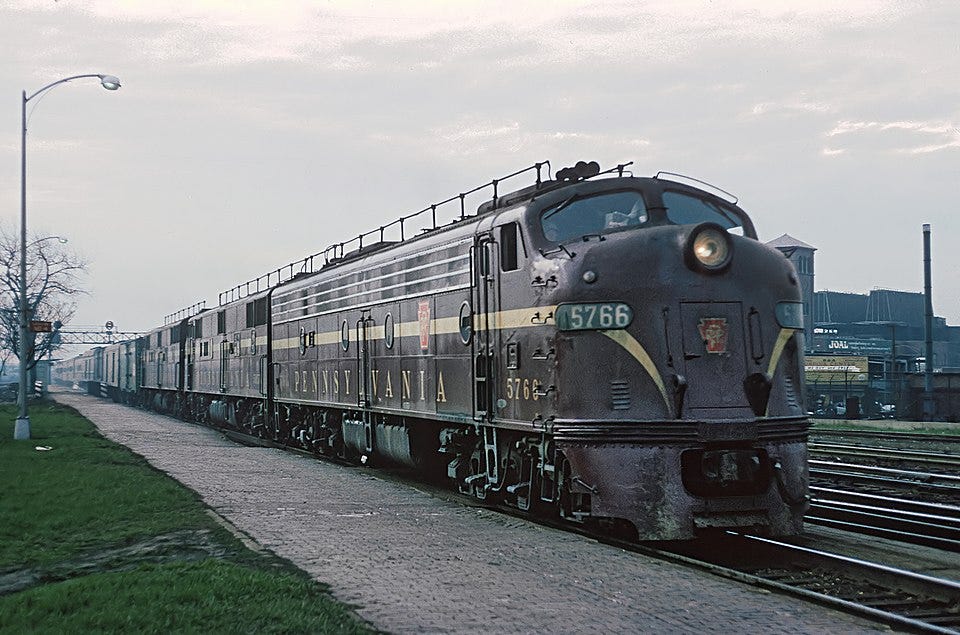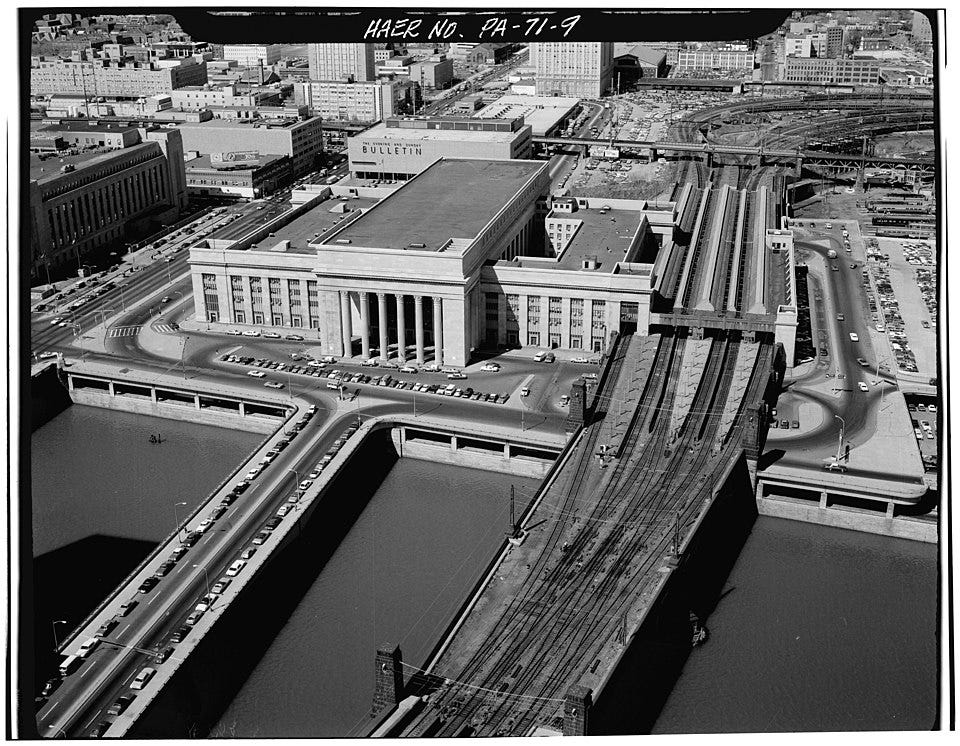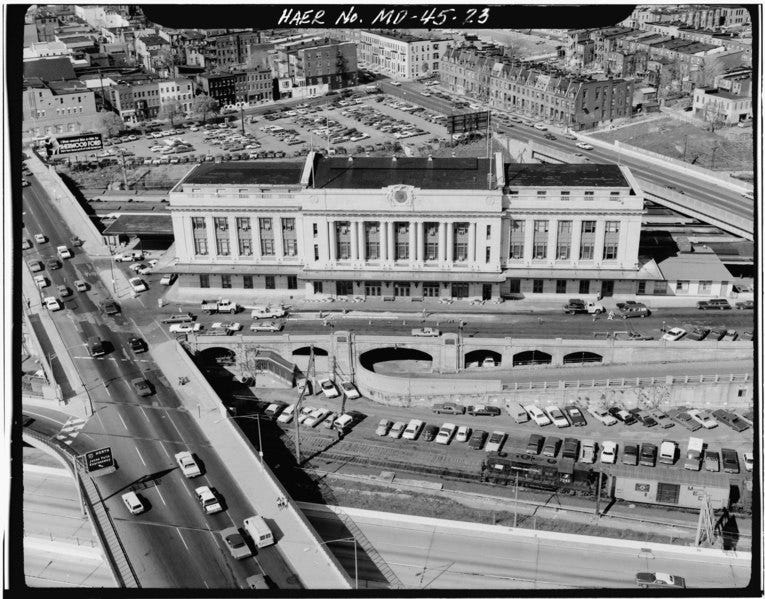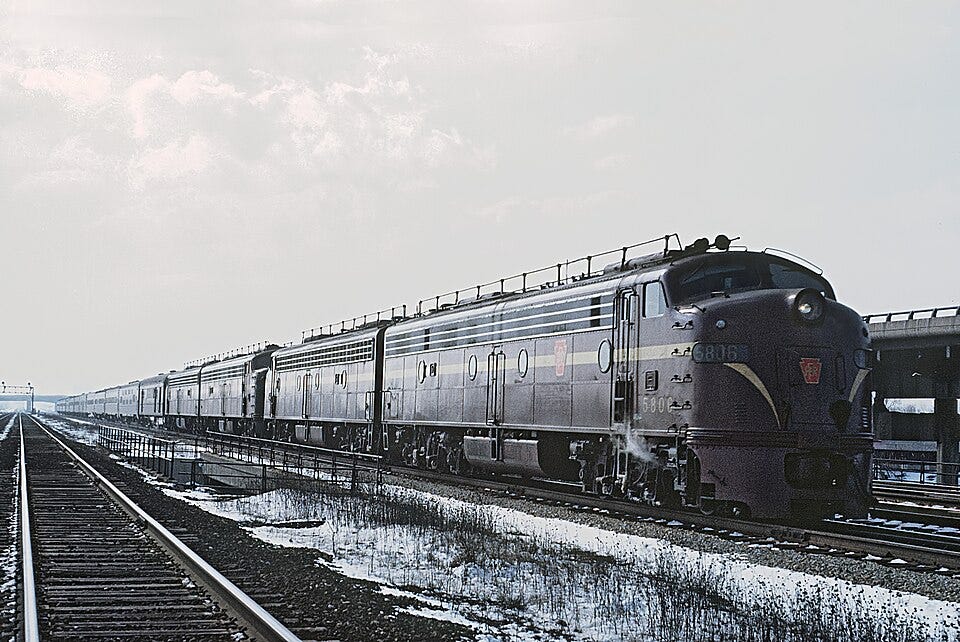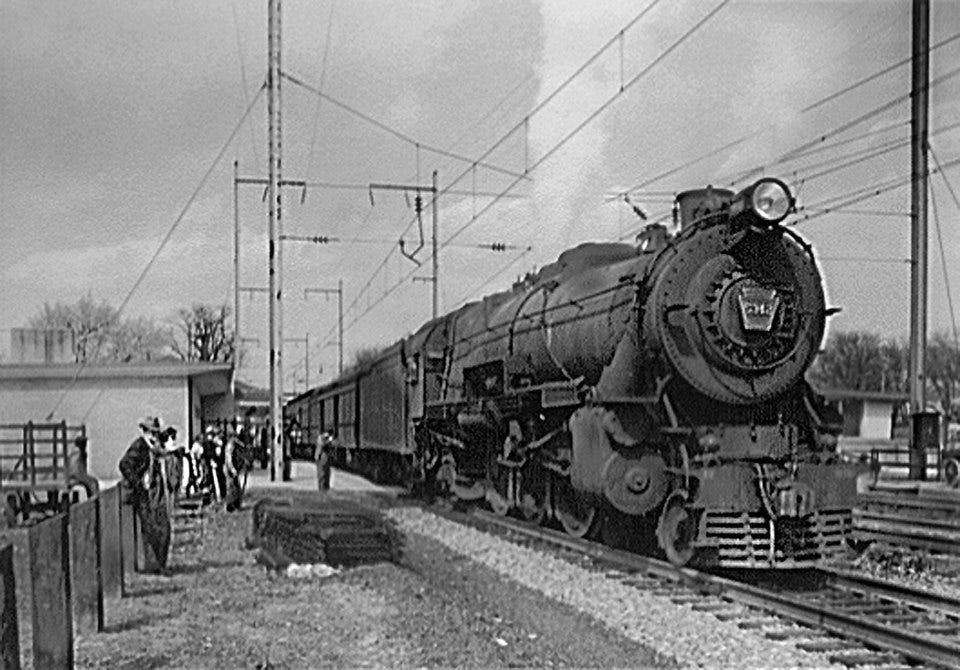
Early release
Publisher’s note: Last time in part 1, looked at was Pennsylvania Railroad freight. Considered this time is the passenger side of Pennsy ops.
All across the United States, in operation, are many different kinds of passenger-rail systems. This is not something you don’t already know. As you know, there is everything from trolley and light rail- and heavy rail-transit to regional commuter and inter-urban long-distance. These are the passenger-rail categorizations. And for one American railroading interest, the Pennsylvania, it had a goodly proportion of all of those passenger-rail services covered.
I guess one could say that growing up with the Pennsylvania Railroad right in one’s own backyard (in Baltimore) like I did, definitely had its pluses. In fact, I rode a few of Pennsy’s passenger trains back in the day.
In spite of my knowledge of such being quite limited, I am, however, aware of names the Pennsy gave to some of its passenger trains. There are notables like the Broadway Limited (an overnight train), the Colonial, the Congressional (with morning, midday and afternoon runs) and the Congressional Limited. What’s helpful in knowing and I think important to note, moreover, is that there were few towns located along Pennsylvania Railroad’s extensive track network of the mid-20th century that were bereft of passenger service — be this of the flagship- or of the puddle-jumper-train-type variety.
Meanwhile, “The Standard Railroad of the World” (as the Pennsy was also known as), had quite an eclectic mix. A veritable cornucopia of passenger-train types existed. Included within those were the steam-, diesel- and electric-locomotive-pulled trains; plus those electric-multiple-unit- (EMU) and diesel-powered of the so-called “Doodlebug” kind.
Interesting to note is PRR’s revenue passenger traffic (in billion miles traveled) for the following years:
1920 (7.325)
1925 (4.518)
1933 (2.017)
1944 (13.047)
1960 (2.463)
1967 (1.757)* (i)
As it relates, what I have decided to do at this time and in this space is to present a compendium of representative photos with corresponding, appropriate captioning information included.
Pennsy Passenger Showcase
An eclectic mix
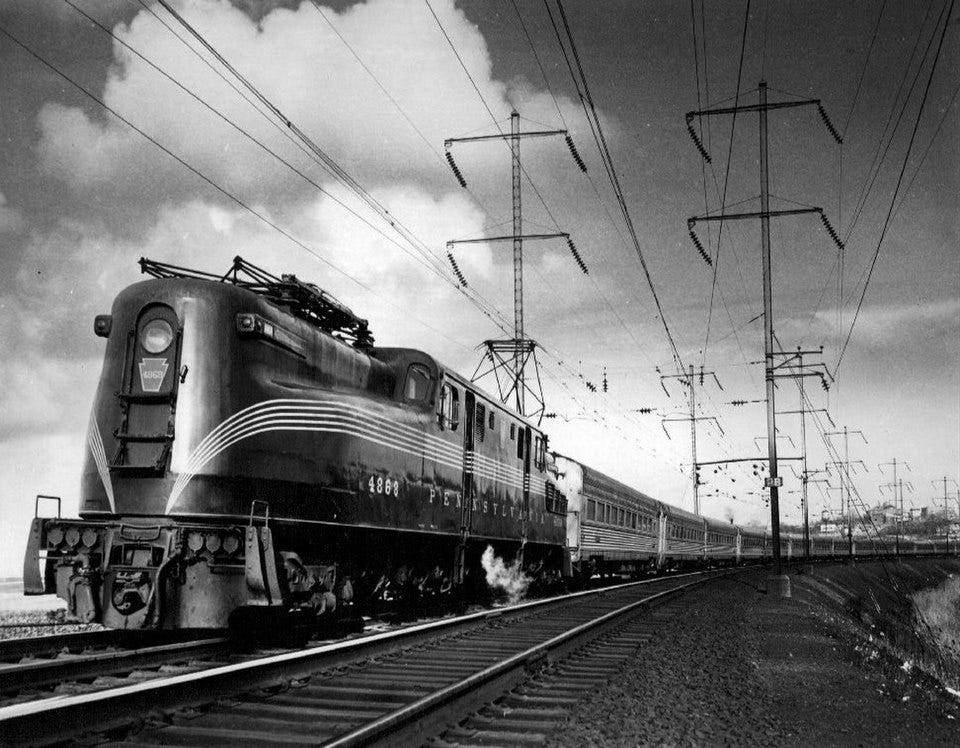
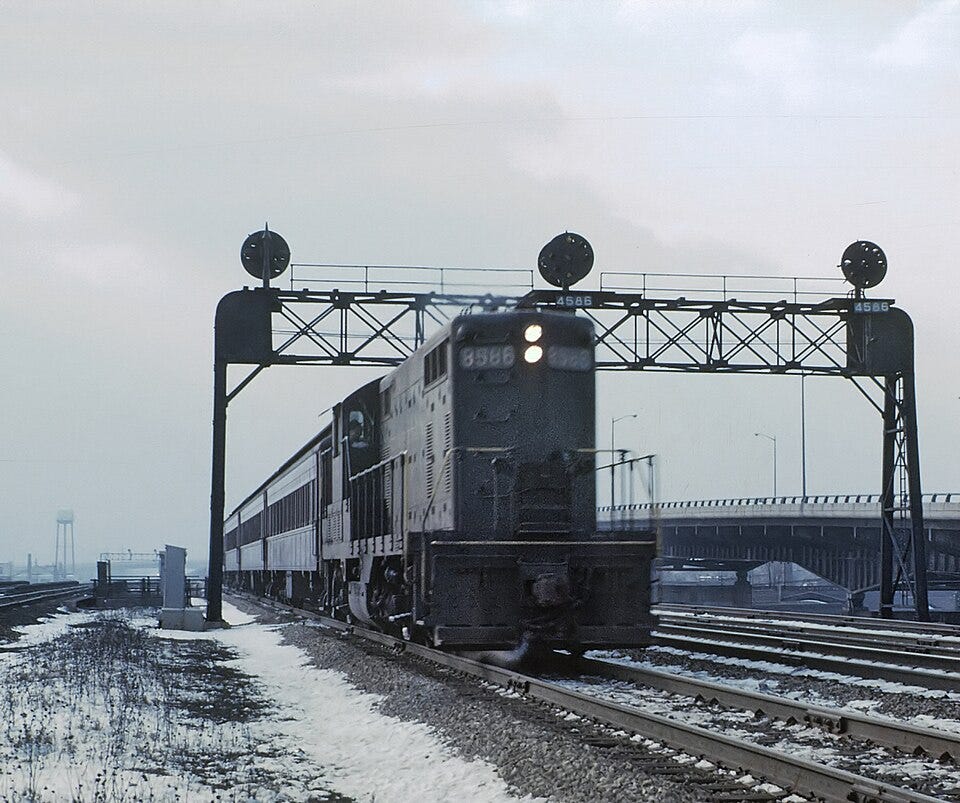
Personal Notes
As an aside, at the time I arrived on scene in 1953, Pennsy passenger trains had a well-earned reputation for being the finest throughout the land. In my younger days, I was fortunate enough to have traveled on several of these. And whereas I was inclined to travel by automobile for the majority of vacation trips taken, my parents would oftentimes take the passenger train. There is only one time when we traveled as a family to and from Miami that we flew, and the other time to and from New Orleans that my dad drove. My train trips, meanwhile, were almost always very long distance but never transcontinental.
At any rate, never did my parents ever consider taking any other train that did not belong to the Pennsylvania. So, to them, there really must have been something special about the Pennsylvania Railroad that really resonated with them. If I had to make an educated guess, it probably had to do with the fact that Pennsy’s passenger runs were under wire while the others were not, at least among those that were proximal to Baltimore.
* Wikipedia, Pennsylvania Railroad, “Timeline,” https://en.wikipedia.org/wiki/Pennsylvania_Railroad
Image credits: Samuel Gottscho (1st); Association of American Railroads (railroad trade organization)-photo is from the Pennsylvania Railroad (2nd); Roger Puta (3rd, 6th, 7th); Jack Boucher, U.S. Department of the Interior, National Park Service, “Historic American Engineering Record.” Survey number HAER PA-71 (4th); Jack Boucher, U.S. Department of the Interior, National Park Service, “Historic American Engineering Record.” Survey number HAER MD-45 (5th); all via Wikimedia Commons
Notes
(i) In an earlier version, numbers were expressed in “million miles traveled” when they should have been expressed in “billion miles traveled.” The numbers are now expressed correctly.
Updated: Apr. 27, 2025 at 10:36 p.m. PDT.
All material copyrighted 2025, Alan Kandel. All Rights Reserved.




